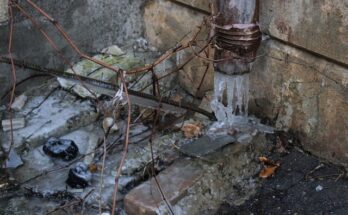A common question asked by homeowners and landlords is, “How often should I replace my roof?”
Of course, there are a lot of factors involved in making this decision. The primary factors are the current quality and age of the roof, and the materials used to construct your roof.
Ask yourself these questions to begin to understand if you need replacement or just repair on your roof.
What is the current age of your roof?
It is important to know when your roof was installed. This, along with the material used for your roof, will be important to determine if you need a new roof.
If your roof is made of tile, a general rule of thumb is that it will last for more than 50 years.
If your roof is made of slate, you can expect your roof to last up to 50 years.
Asphalt shingle roofs can last over 30 years, if they were professionally installed.
Metal roofs, if they receive regular maintenance and upkeep, can last more than 20 years.
What condition is your roof in?
Of course, the material your roof is made with is only one of the considerations. If your roof was not well installed, or has not been actively maintained, the actual lifespan of your roof will be shorter. Make note of the following conditions.
Are there trees touching or near the surface of your roof? Fallen or wind-blown limbs can scrape and damage even the highest quality roof, shortening its effective life span.
Have the eaves, downspouts, and corners been kept free of debris and well-maintained? Blocked water can pool and cause permanent damage to the subsurface, diminishing the effectiveness of the top layer.
Was it professionally installed, with high-performance materials? Some homeowners take the least expensive route to every home repair. This often means that the workers cut corners and use materials that can’t last as long as the roof itself. Or, shoddy and unprofessional workmanship means spots go uncovered and the quality of the roof is compromised.
Are you currently experiencing leaks or water damage? First you will want to rule out corners or downspout back-ups where a small gap is causing water to invade your property. Get a professional inspection to rule this out before replacing an entire roof. Even very small gaps can let in a surprising amount of water during a storm. It is possible, however, that damage can be prevented with a fix of a few hundred dollars rather than a full roof replacement.
Finally, what is the quality of the underlayment? Along with examining the roof, check under the eaves and in the attic or roof crawl spaces to see the surface the roof is sitting on. Is it in good shape? If so, you likely need repairs instead of replacement. If, however, there are multiple spots with visible splitting and/or rotting, or the underlayment material is pulling away or crumbling, a full replacement might be in order.
If you see trouble or any of these signs of water damage, seek an inspection right away. Water can do permanent and expensive damage to your property, and the repairs only get more expensive over time.



